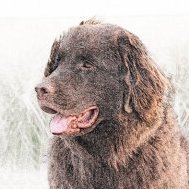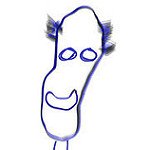-
Posts
626 -
Joined
-
Last visited
Reputation Activity
-
 kat reacted to MEB in my tool bar disappeared
kat reacted to MEB in my tool bar disappeared
Hi Shell,
Welcome to Affinity Forums
I'm not sure to what toolbar you are referring here:
If the tools on the left go to menu View and make sure Show Tools is ticked for the I main toolbar on top go to menu View ▸ Show Toolbar. for the context toolbar (the toolbar right above the work area which changes according tot the tool selected go to menu View ▸ Show Context Toolbar EDIT: Callum was faster...
-
 kat reacted to Callum in my tool bar disappeared
kat reacted to Callum in my tool bar disappeared
Hi Shell,
Welcome to the forums
Please could you try going to View > Show Tools this should bring your tool bar back!
Thanks
C
-
 kat reacted to walt.farrell in window outside of screen not recoverable
kat reacted to walt.farrell in window outside of screen not recoverable
Welcome to the Affinity forums, @Jonas_vS.
You might try Window > Zoom from the menu.
-
 kat reacted to PaulEC in Why can't I place all pages in a long pdf in Affinity Publisher 2?
kat reacted to PaulEC in Why can't I place all pages in a long pdf in Affinity Publisher 2?
Not really "mine". Alfred pointed to Ash's original post, I just did a quick video of it! But I'm glad it's working for you now.
-
 kat got a reaction from PaulEC in Why can't I place all pages in a long pdf in Affinity Publisher 2?
kat got a reaction from PaulEC in Why can't I place all pages in a long pdf in Affinity Publisher 2?
@PaulEC This morning I had to redo a couple lines of the pdf. In Apub I used your technique and it took me 15 minutes as opposed to the 4 hours I spent yesterday placing pdf pages 1 by 1. So happy 😺
-
 kat got a reaction from Oufti in Why can't I place all pages in a long pdf in Affinity Publisher 2?
kat got a reaction from Oufti in Why can't I place all pages in a long pdf in Affinity Publisher 2?
@PaulEC This morning I had to redo a couple lines of the pdf. In Apub I used your technique and it took me 15 minutes as opposed to the 4 hours I spent yesterday placing pdf pages 1 by 1. So happy 😺
-
 kat reacted to PaulEC in Why can't I place all pages in a long pdf in Affinity Publisher 2?
kat reacted to PaulEC in Why can't I place all pages in a long pdf in Affinity Publisher 2?
I'm not sure, but I don't think it matters where you tap it. Best I can suggest have a play around and see what happens! (You could also try adjusting the settings for the picture frame in the Context Tool Bar.)
-
 kat reacted to PaulEC in Why can't I place all pages in a long pdf in Affinity Publisher 2?
kat reacted to PaulEC in Why can't I place all pages in a long pdf in Affinity Publisher 2?
ice_video_20250707-010507.mp4
-
 kat reacted to Pšenda in AD2 artboard aligns to wrong artboard
kat reacted to Pšenda in AD2 artboard aligns to wrong artboard
FX effects are not visible in the bounding box - their effect on the size of the object is only applied when creating an Artboard or when exporting.
For example, this is Outer bevel or Emboss.
-
 kat reacted to Pšenda in AD2 artboard aligns to wrong artboard
kat reacted to Pšenda in AD2 artboard aligns to wrong artboard
... alternatively, you have an fx on the circle that could also enlarge the object - for example Outer Glow or Outer Shadow.
-
 kat reacted to RE4LLY in AD2 artboard aligns to wrong artboard
kat reacted to RE4LLY in AD2 artboard aligns to wrong artboard
My educated guess would be that one of your objects bounding boxes extends outside the black rectangle and as the artboard tool looks at the bounding boxes to determine its size it then ends up larger than the rectangle. Based on only seeing your screenshots my suspicion is that your circle could be the culprit. Is it rotated by any chance so that its bounding box corners extend outside the rectangle?
If so you can fix it by making sure that all your objects bounding boxes stay within the rectangle before creating the artboard which you can achieve for example by clipping everything to the rectangle.
Also pay attention that your rectangle layer is aligned to the pixel grid, since if it is not it sometimes can also cause issues when creating artboards.
And one final note, to adapt the size of the artboard accurately, you can actually type in the desired size in the Transform panel when you have the artboard layer selected which allows for a more precise input.
-
 kat reacted to RE4LLY in AD2 artboard aligns to wrong artboard
kat reacted to RE4LLY in AD2 artboard aligns to wrong artboard
Yeah you can quickly turn your Zoom 500 Layer into an Artboard.
For that select it, then activate the Artboard Tool and then in the context toolbar for the size select "Selection" and then click Insert Artboard.
However, for your original issue with the alignment you can also do it without an extra artboard and outside the existing artboard.
For that select both your Sultan and the black rectangle layer, then in your top Toolbar click on the Alignment Button to open the alignment menu. There click on the Align Centre Option and then in the Align To dropdown choose "Selection Bounds" instead of "Artboard". That way your Sultan layer will not get centred to the existing artboard but will get centred to the black rectangle.
And finally for the issue with your disappearing layer when moving a layer in the bounds of an artboard, you can simply deselect the little Button "Edit All Layers" in the lower left corner of your layer panel. That will stop the layer from becoming a child layer of the artboard.
-
 kat reacted to Pšenda in AD2 artboard aligns to wrong artboard
kat reacted to Pšenda in AD2 artboard aligns to wrong artboard
As far as I know, there is always a problem with objects "outside" artboards - they can't be outside, so they always move to some Artboards. Why do you have Zoom 500 as a Layer, and not as Artboards?
-
 kat got a reaction from smadell in Can you import gradient maps?
kat got a reaction from smadell in Can you import gradient maps?
I redid the gold gradient map. here it isgold grad map.afphoto
-
 kat got a reaction from smadell in Can you import gradient maps?
kat got a reaction from smadell in Can you import gradient maps?
Now that I finally noticed "Add Preset" I'll remake my gold. Thanks @smadell You're a star!
-
 kat reacted to smadell in Can you import gradient maps?
kat reacted to smadell in Can you import gradient maps?
Good morning, @kat. Regarding the import of gradient maps, I simply don’t think there’s any way to do this. For some reason, Serif decided that gradients and gradient maps are so completely different that can’t share a file type. I have always maintained that there should be a centralized repository for gradients (in a manner similar to Photoshop's) which can be accessed to form linear, radial, and other types of gradients, but can also be used as the basis for creating gradient maps (even if the user edits the position, opacity, etc of the various color stops). Alas, this is not (yet?) the case. Since there is no file type extension for an Affinity Photo gradient map, they cannot be easily exported and/or imported.
The only way I know of to share them is to create a document using multiple gradient map adjustment levels and share that document. Then, the recipient can open the document, turn on each individual gradient map adjustment, and save it as a preset. Clunky, to be sure.
A gradient map’s settings can also be stored in a macro, but that’s even more difficult if the primary purpose is simply to share settings.
I’ve attached an .afphoto document for you with all of the “cool gradient maps” you asked about earlier. If you want to keep all or some of them, open the adjustment layer and click “Save as Preset” in the panel. I’ve also included a link to a macro I posted a while back for enhancing skin tones, which you might want to try out.
Gradient Map Transfer.afphoto
-
 kat reacted to nickbatz in dropper on mac to select color outside of affinity photo
kat reacted to nickbatz in dropper on mac to select color outside of affinity photo
That's a universal Mac command, by the way. It should work in all programs.
-
 kat reacted to v_kyr in Enhance Skin Tones - FREE Macros for Download
kat reacted to v_kyr in Enhance Skin Tones - FREE Macros for Download
Where did you read that? ZIP files have usually a "filename.zip" extension and this "Enhance Skin Tones.afmacros" file contribution doesn't. Further the online help usually tells how to deal with "*.macros" and "*.macro" files.
"*.macros" files are usable in the Library panel and can be imported there. "*.macro" files (without an plural s at their extensions end) instead in the Macro panel and can be imported into that panel. one thus has to distinguish between "*.macros" and "*.macro" files here See also therefor in the online help ...
Library Panel Macro Panel Macros -
 kat reacted to Komatös in Enhance Skin Tones - FREE Macros for Download
kat reacted to Komatös in Enhance Skin Tones - FREE Macros for Download
Hi @bchill and welcome to the forums.
Open Affinity Photo and drag&drop the Skin Tones.afmacros to the work space.
-
 kat reacted to smadell in Enhance Skin Tones - FREE Macros for Download
kat reacted to smadell in Enhance Skin Tones - FREE Macros for Download
I hope these work for you, @James19. Enjoy them, and please come back and comment (or post a before & after) when you've had some time to use them!
-
 kat reacted to smadell in Enhance Skin Tones - FREE Macros for Download
kat reacted to smadell in Enhance Skin Tones - FREE Macros for Download
The examples above may just be too subtle. Here's' another photo with Original and Enhanced Skin Tones versions. The results may be a bit more obvious.
-
 kat reacted to smadell in Enhance Skin Tones - FREE Macros for Download
kat reacted to smadell in Enhance Skin Tones - FREE Macros for Download
I have attached a macro category called "Enhance Skin Tones." This is a free download which will help add color and tone to the skin of your portraits. There are 21 different enhancement macros included, grouped for Light, Peach, Tan, and Dark skin. These macros are meant to enhance, not replace, skin colors. The macros are all based on the use of Gradient Maps, and use different dark and light colors along with setting opacity and blend mode for each adjustment.
While the skin tone macros are grouped into Light, Peach, Tan, and Dark skin groups (roughly corresponding to Caucasian, Asian, Hispanic, and African coloration) they are certainly not exclusive. You may want to experiment using the adjustments from any (or all) of the groups to add different coloration and tone to your underlying portrait.
The Light and Peach skin tone macros add a gradient map and set its opacity to 25%. The Tan skin tone macros set the opacity to 30%. The Dark skin tone macros set the opacity to 40%. All of the macros set the blend mode of the gradient map adjustment to Soft Light. You should also experiment with changing the opacity and blend mode of the adjustments, as these will create different effects that you might like. Try using blend modes such as Overlay, Linear Light, and even Multiply. The results can be subtle, but changing the default settings can often make them fairly dramatic.
An important note: the macros work best when you have the skin selected prior to invoking the macros. This ensures that the gradient map adjustment uses your selection as a mask, and applies the changes to the skin only. As with all layer masks, however, you can edit the mask (by painting on the adjustment layer in black or white) after the fact.
Here is a graphic that includes 4 portraits (labelled as Original versions) along with versions of each of the 21 different skin tone enhancing macros. The enhanced versions are all based on the default settings for the respective macros. Under each example is the name of the skin tone macro used, along with a gradient representing the dark and light colors used in the gradient map adjustment. Remember that these results look very subtle, but your results can be more dramatic simply by increasing the opacity slider.
The attached macro category was created in Affinity Photo 2, and probably will not be compatible with version 1. It is a category and therefore should be imported into the Library panel (using the "hamburger menu" at the panel's top right corner). The category includes the 21 skin tone macros, but also includes a macro called "Try All Skin Tones" which will create a group (with sub-groups) that includes all 21 adjustments so you can try them all to see which one you like. There is also a macro called "Instructions - Enhance Skin Tones" which will display on-screen instructions for using the macros. These instructions are placed in a separate layer which you should delete after having read and understood the instructions.
[These macros are loosely based on some of the gradients used in a recent YouTube video by Blake Rudis, whose f64 Academy channel has been quite helpful (especially for matters concerning color grading). Blake's videos are exclusively aimed at Photoshop users, but the methods he uses are almost always compatible with similar methods in Affinity Photo. So, a big thank-you to him.]
As with all of my Resource uploads, these are the work of 1 person working on 1 computer. I do not pretend to have tested them extensively, but I believe they will function as they are supposed to. Try them and see if they work for you. If they do, they are free for your use without restriction.
I have always encouraged users to "pay it forward" and help others in this forum as they themselves become more knowledgeable and adept at using Affinity Photo. This is how knowledge and good will spreads.
Enhance Skin Tones.afmacros
-
 kat got a reaction from nickbatz in dropper on mac to select color outside of affinity photo
kat got a reaction from nickbatz in dropper on mac to select color outside of affinity photo
Googled it: To switch between open files in Affinity Photo, use Ctrl + Tab (or Ctrl + Shift + Tab for the reverse direction) on Windows, or Command + ` (tilde key) on macOS. These shortcuts cycle through all open document tabs within the application.
-
 kat got a reaction from Old Bruce in dropper on mac to select color outside of affinity photo
kat got a reaction from Old Bruce in dropper on mac to select color outside of affinity photo
Googled it: To switch between open files in Affinity Photo, use Ctrl + Tab (or Ctrl + Shift + Tab for the reverse direction) on Windows, or Command + ` (tilde key) on macOS. These shortcuts cycle through all open document tabs within the application.
-
 kat reacted to smadell in Can you import gradient maps?
kat reacted to smadell in Can you import gradient maps?
@kat - You got me hooked. Never one to shy away from a challenge (or so I claim…) I watched the video. Obviously, Clip Studio Paint is wholly different from Affinity Photo, but I think that what I came up with is essentially the same process. I've attached a video, but basically I (i) masked out the area I wanted to paint; (ii) added a Pixel layer in which I added shading in black and white; and (iii) added a Gradient Map above that shading layer. Since the Gradient Map will apply different colors depending on the luminosity of the underlying layer, I can change the color by lightening or darkening the Shading layer. Effectively, it's dodging and burning with the goal of changing the luminosity so that the gradient map applies different colors.
A picture is worth a thousand words, so a video is probably even better. Try this:
Gradient Map Painting.mp4



.thumb.jpg.2ac1b0424a6896c349d3d16eea40c7f3.jpg)

